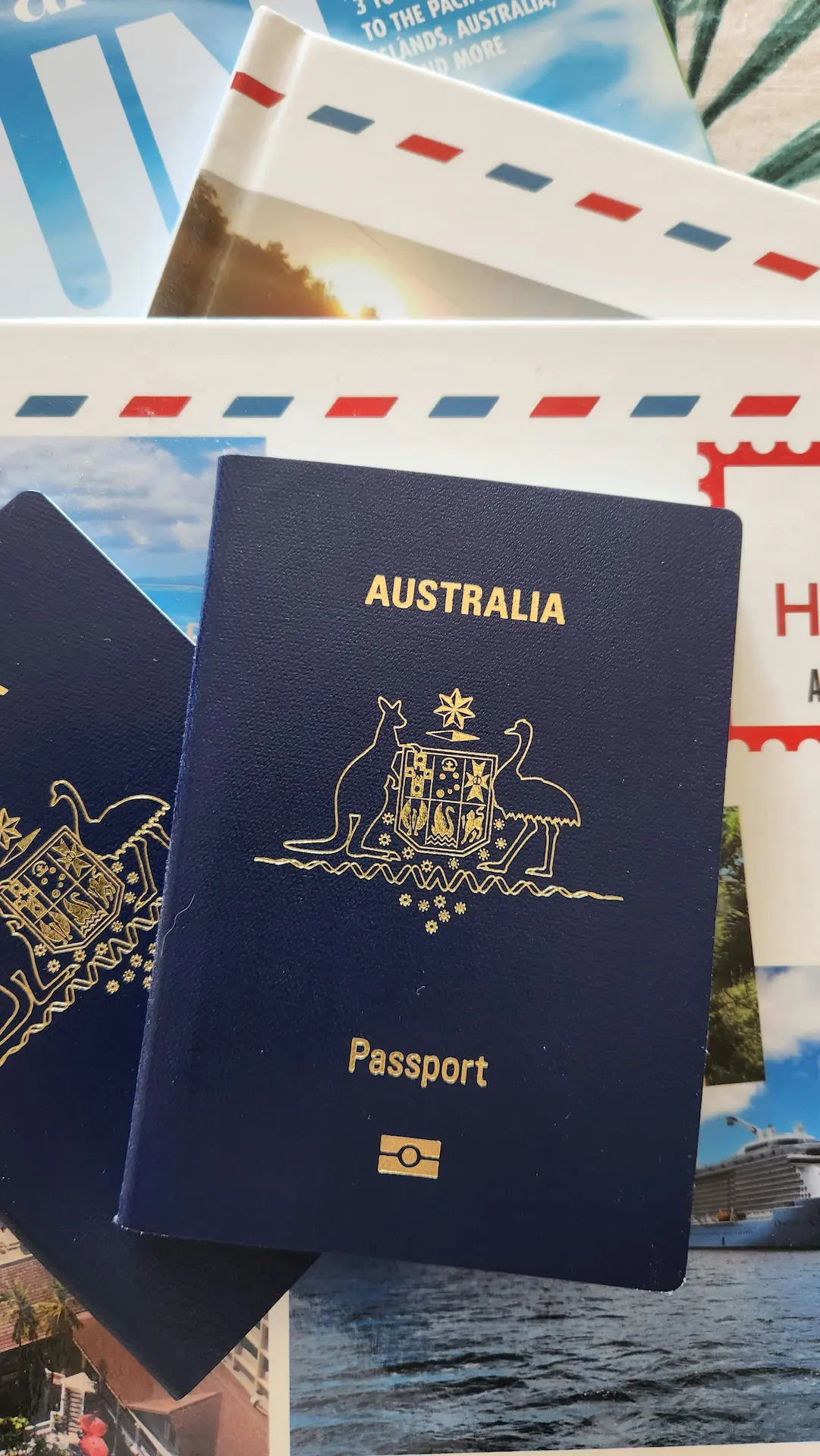The Ultimate Guide to Permanent Residency Visas in Australia: Partner, Work, and Self-Sponsored Pathways
Last updated: 30th of April 2025
G’day, fellow travelers and aspiring Aussie residents!
It’s been a while since I’ve updated this blog (life gets busy, doesn’t it?), but I’m back with what I consider to be a very interesting topic: how to turn your Australian dreams into permanent reality?
IMPORTANT DISCLAIMER: Before we dive in, I want to be crystal clear that I am NOT an immigration agent or legal professional. All information provided in this post is purely informative and based on research. Immigration laws and requirements change frequently, so please consult with a registered migration agent or immigration lawyer before making any decisions. This article is meant to give you a starting point for your research, not definitive advice.
Australia remains one of the most sought-after destinations for people looking to relocate permanently, and for good reason! The combination of stunning landscapes, vibrant cities, excellent healthcare, world-class education, and high quality of life makes it an attractive place to call home. I’ve been living here on and off for almost 10 years and I have an Australian partner so Australia is definitely very close to my heart!
But navigating the Australian immigration system can feel overwhelming. Today, I’m breaking down three of the most common pathways to, potentially, getting permanent residency (PR) in Australia:
- Partner Visa
- Employer-Sponsored Visa
- Self-Sponsored Skilled Visa
Let’s explore each option in detail, looking at the requirements, costs, processing times, and the pros and cons of each pathway.

Partner Visa (Subclasses 820/801 and 309/100)
If you’re in love with an Australian citizen (like I am), permanent resident, or eligible New Zealand citizen, this visa is the one you might be looking at in order to live with your partner full time and create a life together in a country that you both (hopefully) love.
What Is It?
The Partner Visa comes in two forms:
- Onshore application (Subclasses 820/801): For when you’re already in Australia
- Offshore application (Subclasses 309/100): For when you’re outside Australia
Both pathways involve a two-stage process:
- A temporary visa (820 or 309) that allows you to live and work in Australia legally and you also get full Medicare coverage
- A permanent visa (801 or 100) that grants permanent residency
The idea is simple: you apply first for the temporary visa, and then after two years from the date of the first application, you can apply for the permanent visa. The government wants to make sure your relationship is genuine and continuing before granting permanent status.
This is the visa I’ve applied for exactly two days ago! Let me tell you though, it’s been one of the most intense, challenging and expensive things I’ve ever done in my life! The sheer amount of proofs that you need to provide to the government to show them that your relationship is real and genuine is massive! Although, I totally get why they ask so many things and if your relationship is genuine, real and you are committed to one and other, it shouldn’t be too hard to collect everything. Sure, not every couple is the same and especially in you two are often in different countries like me and my partner are, then you might not have everything to cover every pillar. Immigration is aware of this and they will take it into consideration so don’t let fear or doubts stop you! If you want to live your life with your Australian partner, you will be able to do it!
Requirements
To qualify for a Partner Visa, you’ll need to:
- Be in a genuine relationship with an Australian citizen, permanent resident, or eligible New Zealand citizen as either:
- A married couple
- A de facto couple (living together for at least 12 months, with some exceptions)
- In a registered relationship in an Australian state or territory that allows it (this is not available in Western Australia and the Northern Territory)
- Provide extensive evidence of your relationship across four main categories:
- Financial aspects (shared finances, joint assets)
- Social aspects (recognition of your relationship by friends and family)
- Nature of household (living arrangements, household responsibilities)
- Commitment to each other (future plans, duration of relationship)
- Meet health and character requirements:
- Pass health examinations
- Provide police clearances
- Have no serious criminal record
- Have a sponsor who meets requirements:
- Your partner must be eligible to sponsor you
- They must meet character requirements
- They must agree to support you financially and for accommodation
My experience with applying for the Offshore Partner Visa
As I said, we tried to collect as much proofs as we could to cover these 4 pillars. It was time and energy consuming but I knew it was for a much greater cause which was to live with my partner in Australia. I’m planning on writing a more detailed post about my experience with this visa, collecting all the proofs, categorizing them, making sure that they are easy to understand for the Case Officer. Some of the proofs we uploaded are:
- Statements from our joint accounts and credit cards
- Pictures of us and with friends and family from 2016 to 2025
- Around 150 pages of screenshots of messages from when we were apart and between us and our families and friends
- Police checks from countries where we lived in for more than 12 months in the past 10 years
- 5 statements from friends and families about our relationship
- Facebook and Instagram posts
- Travel and events tickets
- Home ownership paperwork
- Will and superannuation where I’m listed as one of the beneficiaries and a lot more!
I know that reading this might see scary and intense and that you might not have everything available when applying. However, you can always keep uploading documents after having lodged the application. I truly believe that a real and genuine relationship is strong enough to handle all of these intense workload!
Cost
This is where it gets a bit painful for the wallet:
- Application fee: Currently AUD 9,095. Don’t panic though! This fee covers both the temporary and permanent visa so you wont have to pay anything else when applying for the second stage. Yes, it’s still A TON of money but I’m trying to see it as an investment to myself and my future life with my partner.
- Additional applicant over 18: AUD 4,550
- Additional applicant under 18: AUD 2,280
- Health examinations: Approximately AUD 300-400 per person
- Police clearances: Varies by country (roughly AUD 50-150 per clearance)
- Translation costs: Varies if documents aren’t in English
- Migration agent fees: Optional but can range from AUD 3,000-8,000
The total investment typically ranges from AUD 9,500 to AUD 18,000, depending on your circumstances and whether you use a migration agent.
Processing Time
This is another tough part of this visa. Partner visas are notorious for their long processing times:
- Temporary visa (820/309): Currently about 18-24 months
- Permanent visa (801/100): About 12-18 months after eligibility
That means you could be looking at approximately 3-4 years from application to permanent residency. I’ve heard of some people getting the temporary one after only 5-6 months from applying while others have been waiting for 16 months or more. It’s really hard to tell what might cause an application to take more or less time than another one. For the offshore 309 visa, once you get the temporary granted though, you’ll have work rights and access to Medicare with your temporary visa. If you have applied for the onshore 820 one, once your previous visa expires (the one you had at the moment of application), you should get a Bridging Visa A which grants you full working right but you cannot leave the country while on this Bridging Visa. You will need to apply for a Bridging Visa B to do so.
Pros and Cons
Pros:
- No skills assessment or points test required
- Immediate work rights once the temporary visa is granted or Bridging Visa A
- Medicare access from the temporary visa stage
- Ability to include dependent children in your application
- Can lead to citizenship after meeting residency requirements
Cons:
- Very expensive compared to some other visa options
- Long processing times
- Relationship scrutiny can feel invasive
- Relationship breakdown could jeopardize your visa status
- Sponsor limitations (a person can generally only sponsor two partners in their lifetime, with at least 5 years between applications)
Official Resources
- Partner Visa Onshore Information – Department of Home Affairs
- Partner Visa Offshore Information – Department of Home Affairs
- Relationship Evidence Guide – Department of Home Affairs
Employer-Sponsored Permanent Residency (Subclass 186 ENS)
If you have an Australian employer willing to sponsor you for permanent residency, the Employer Nomination Scheme (ENS) visa (subclass 186) might be your ticket to becoming an Aussie PR.
What Is It?
The 186 visa is designed for skilled workers with an employer willing to offer them a permanent position in Australia. Unlike temporary work visas, this leads directly to permanent residency.
The visa has three streams:
- Temporary Residence Transition stream – for people who have worked for their employer on a 482 or 457 visa for at least three years
- Direct Entry stream – for people who haven’t worked in Australia or have less than three years’ experience with their nominating employer
- Labour Agreement stream – for people nominated by an employer with a labour agreement
Requirements
Requirements vary slightly between streams, but generally include:
- Nomination by an approved Australian employer who:
- Has a genuine need for the role
- Offers a permanent, full-time position
- Offers market salary rates
- Meets training benchmarks
- Passes the “genuineness” test
- Skills and qualifications:
- For Temporary Residence Transition: at least 3 years’ experience with your nominating employer on a 457/482 visa
- For Direct Entry: a positive skills assessment and at least 3 years’ relevant work experience
- For both: your occupation must be on the relevant skilled occupation list
- Age: Generally under 45 years at the time of application (with some exceptions)
- English language ability: At least Competent English (equivalent to IELTS 6 in each component)
- Health and character requirements: Similar to the partner visa
Cost
Another significant investment:
- Nomination fee: AUD 540
- Application fee: AUD 4,770 for the main applicant
- Additional applicants over 18: AUD 2,385 each
- Additional applicants under 18: AUD 1,190 each
- Skills assessment: Varies by occupation
- English test: Approximately AUD 330-340
- Health examinations: Approximately AUD 300-400 per person
- Police clearances: Varies by country
- Migration agent fees: Optional but can range from AUD 5,000-10,000
Total cost typically ranges from AUD 6,000 to AUD 16,000, depending on family size and whether you use a migration agent.
Processing Time
Current processing times for the 186 visa:
- Temporary Residence Transition stream: 8-14 months
- Direct Entry stream: 12-18 months
- Labour Agreement stream: 6-12 months
These times can vary significantly based on individual circumstances and departmental workloads.
Pros and Cons
Pros:
- Direct path to permanent residency without a temporary visa stage
- No points test required
- Immediate access to Medicare and social security benefits upon grant
- No geographic restrictions after visa grant (you can change employers)
- Includes family members in the application
- Clear pathway to citizenship
Cons:
- Employer-dependent application process – if you lose your job or the employer withdraws support during processing, your application could be refused
- Limited occupation eligibility – not all skilled occupations qualify
- Age limit of 45 (with limited exceptions)
- Significant costs to employer may make some reluctant to sponsor
- Processing times can be lengthy
- Regional restrictions may apply for some positions
Official Resources
- Employer Nomination Scheme (186) – Department of Home Affairs
- Sponsorship Requirements – Department of Home Affairs
Self-Sponsored Skilled Independent Visa (Subclass 189)
If you don’t have an Australian partner or employer to sponsor you, the Skilled Independent visa (subclass 189) might be your best bet for permanent residency.
What Is It?
The 189 visa is a points-based permanent residency visa that doesn’t require sponsorship from an employer, state, or family member. It allows skilled workers to live and work in Australia as permanent residents based solely on their own merits and skills.
This is often considered the “holy grail” of Australian visas because it gives you complete freedom to live and work anywhere in Australia without restrictions or obligations to any sponsor.
Requirements
The 189 visa has a competitive points-based system:
- Points test score: Currently, you need to score at least 65 points, but in reality, invitations typically go to those with scores of 85-95 points or higher due to competition.
- Age: You must be under 45 at the time of invitation.
- Skills assessment: You need a positive skills assessment from the relevant assessing authority for your nominated occupation.
- Nominated occupation: Your occupation must be on the Medium and Long-term Strategic Skills List (MLTSSL).
- English language proficiency: Minimum of Competent English, with higher points for Proficient or Superior English.
- Expression of Interest (EOI): You must submit an EOI through SkillSelect and receive an invitation before you can apply.
- Health and character requirements: Similar to other PR visas.
Points System Breakdown
Points are awarded for:
- Age: 25 points (18-25 years), 30 points (25-33 years), decreasing for older applicants
- English language: 0 points (Competent), 10 points (Proficient), 20 points (Superior)
- Skilled employment experience:
- Overseas experience: 5 points (3-5 years) up to 15 points (8-10 years)
- Australian experience: 5 points (1-3 years) up to 20 points (8-10 years)
- Educational qualifications: 15 points (Bachelor’s degree) to 20 points (Doctorate)
- Australian study requirement: 5 points
- Professional Year in Australia: 5 points
- Additional factors: Points for community language, regional study, spouse skills, etc.
Cost
- Skills assessment: Varies by occupation
- English test: Approximately AUD 330-340
- Application fee: AUD 4,765 for the main applicant
- Additional applicants over 18: AUD 2,385 each
- Additional applicants under 18: AUD 1,195 each
- Health examinations: Approximately AUD 300-400 per person
- Police clearances: Varies by country
- Migration agent fees: Optional but can range from AUD 3,000-7,000
Total cost typically ranges from AUD 5,500 to AUD 14,000, depending on family size and whether you use a migration agent.
Processing Time
Current processing times for the 189 visa:
- 75% of applications: Processed within 12 months
- 90% of applications: Processed within 24 months
These timeframes begin after you receive an invitation and submit your application. The waiting time for an invitation varies based on your points score and occupation demand.
Pros and Cons
Pros:
- Complete freedom to live and work anywhere in Australia
- No sponsor obligations to any employer, state, or family member
- Immediate permanent residency upon grant (no provisional visa stage)
- Includes family members in the application
- Can sponsor relatives for certain visas after becoming a PR
- Full access to Medicare and social benefits
- Clear pathway to citizenship
Cons:
- Extremely competitive – high points thresholds for invitations
- Limited occupation eligibility – must be on the MLTSSL
- Age limit of 45 (with no exceptions)
- Points system can disadvantage older applicants or those with less experience
- Invitation uncertainty – no guarantee of getting invited even with eligible points
- Processing delays possible without warning
Official Resources
- Skilled Independent Visa (189) – Department of Home Affairs
- SkillSelect – Department of Home Affairs
- Points Test – Department of Home Affairs
Comparative Analysis: Which PR Pathway Is Right For You?
Now that we’ve explored each visa option in detail, let’s compare them to help you determine which might be the best fit for your circumstances:
Cost Comparison
From least to most expensive (approximately):
- Skilled Independent (189): AUD 5,500-14,000
- Employer Nomination Scheme (186): AUD 6,000-16,000
- Partner Visa (820/801 or 309/100): AUD 9,095-18,000
Processing Time Comparison
From fastest to slowest (approximately):
- Employer Nomination Scheme (186): 8-18 months
- Skilled Independent (189): 12-24 months
- Partner Visa (820/801 or 309/100): 3-4 years for full PR
Flexibility Comparison
From most to least flexible:
- Skilled Independent (189): Complete freedom, no obligations
- Partner Visa (820/801 or 309/100): Freedom to work anywhere, but relationship dependent
- Employer Nomination Scheme (186): Initially tied to employer
Difficulty of Qualification
From easiest to hardest to qualify for:
- Partner Visa: Needs genuine relationship but no skills requirements
- Employer Nomination Scheme: Needs employer and skills, but no points test
- Skilled Independent: Highly competitive points system
Making Your Decision: Key Questions to Ask Yourself
When deciding which PR pathway to pursue, consider these questions:
- Do I have an Australian partner? If yes, the Partner Visa might be your most straightforward option.
- Do I have an Australian employer willing to sponsor me? If yes, the 186 visa could be your quickest route to PR.
- Do I have a highly in-demand skill and high points score? If yes, the 189 visa offers the most freedom.
- How important is processing time to me? If speed is critical, employer sponsorship might be best.
- How important is freedom of employment? If you want no restrictions, the 189 visa is ideal.
- What’s my budget for visa costs? This might limit your options.
- How old am I? Remember the 45-year age limit for skilled visas.
- Do I have family members to include? All these visas allow family inclusion, but costs increase.
Tips for a Successful PR Application
Regardless of which pathway you choose, here are some universal tips for success:
- Start early: The earlier you begin planning, the better your chances.
- Consult professionals: A registered migration agent can save you time, stress, and potentially money by preventing mistakes.
- Keep documents organized: Create a filing system for all your documents and evidence.
- Be thorough with evidence: More evidence is better than not enough.
- Be honest: Providing false information can result in visa refusal and future visa bans.
- Improve your English: Higher English scores provide more points for skilled visas and ease the process for all visa types.
- Stay updated on changes: Immigration rules change frequently, so keep informed of the latest requirements.
- Have a backup plan: Consider alternative visa options if your primary choice doesn’t work out.
Final Thoughts
The journey to Australian permanent residency can be lengthy, expensive, and sometimes frustrating, but the rewards of living in Australia make it worthwhile for many like me. Preparing and applying for the Partner Visa was long and intense but I’m so grateful for having the possibility of doing so and I’m keeping my fingers crossed that everything will go well!
Remember that while I tried to make this guide as detailed and correct as possible, it can’t replace personalized advice from a registered migration agent or immigration lawyer. Every case is unique, and professional guidance can make all the difference in your success.
REMINDER: I am not a registered migration agent or immigration lawyer. All information provided is general in nature. For advice specific to your situation, please consult with a registered migration agent or speak directly with the Department of Home Affairs.
I hope this guide has helped clarify your options for achieving permanent residency in Australia! If you have specific questions about your situation, the comment section below is open for discussion.
Have you been through any of these PR processes? I’d love to hear about your experiences!
Safe travels and good luck with your Australian immigration journey!
[This information is current as of April 2025. Please check the Department of Home Affairs website for the most up-to-date information as visa requirements and fees change frequently.]





